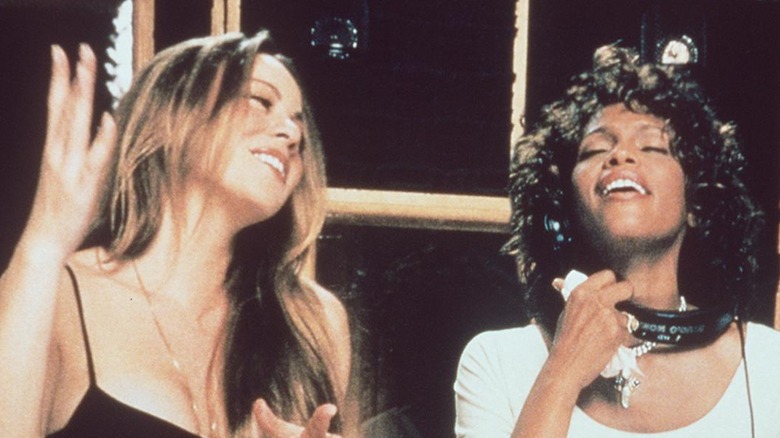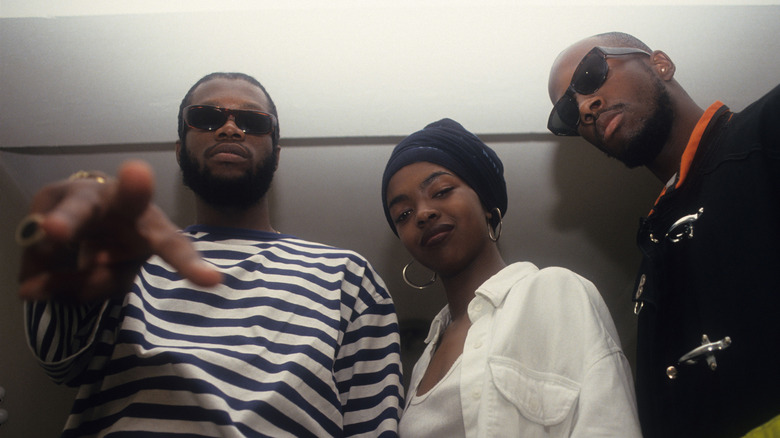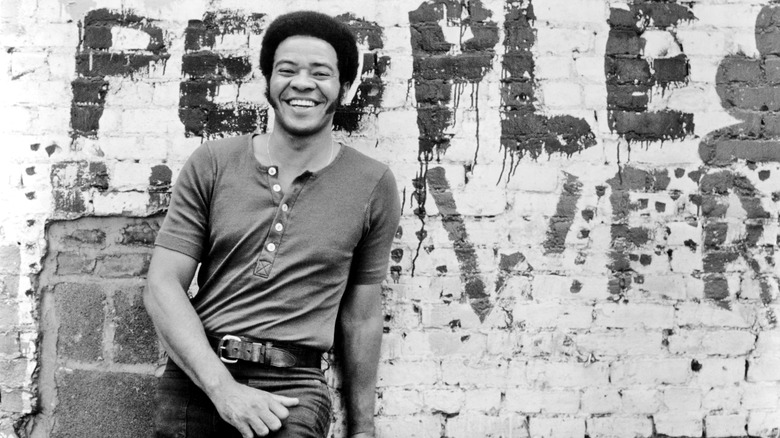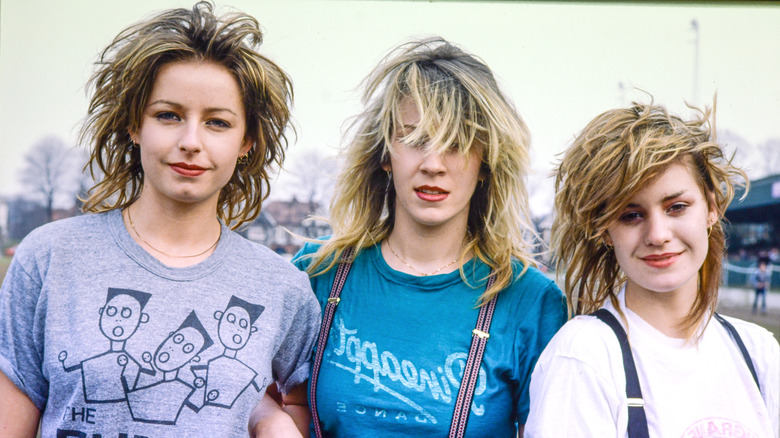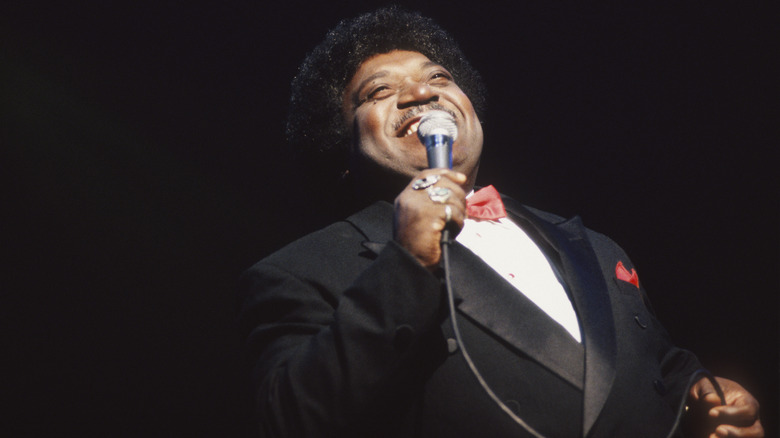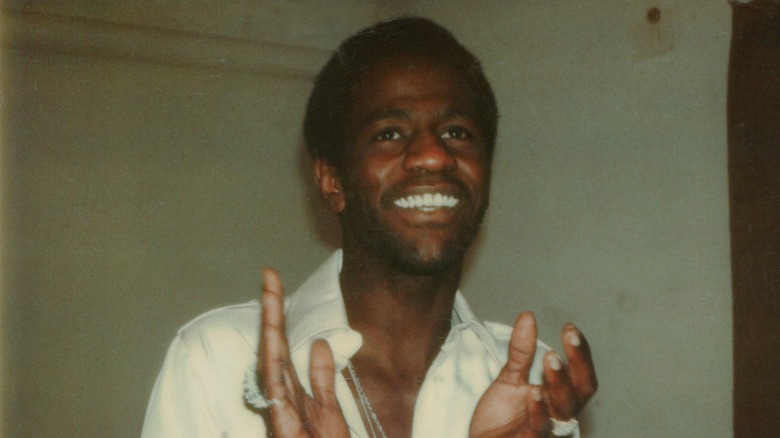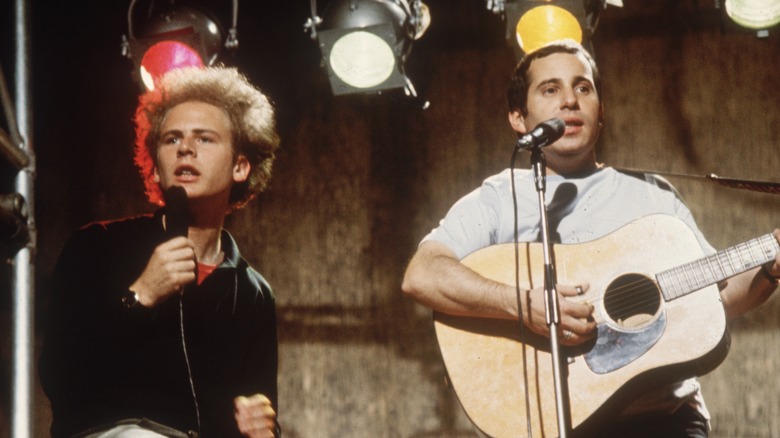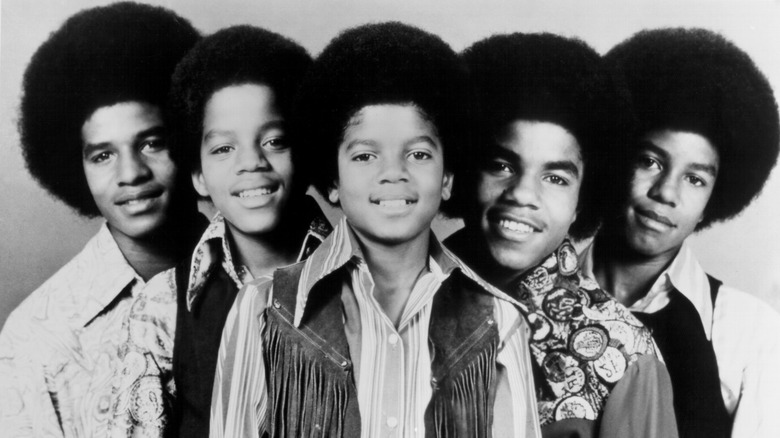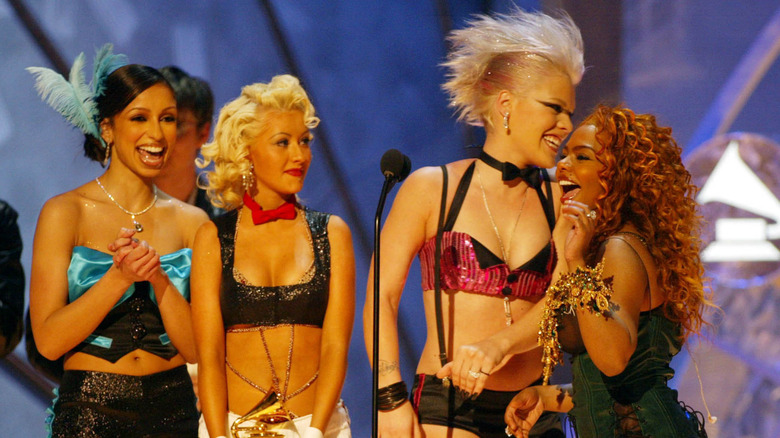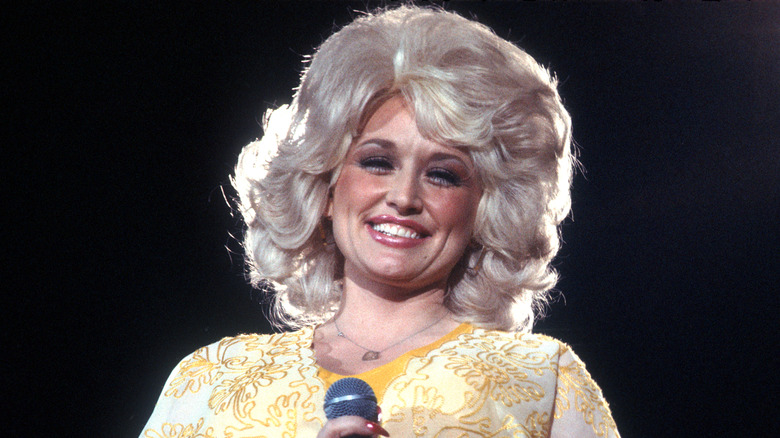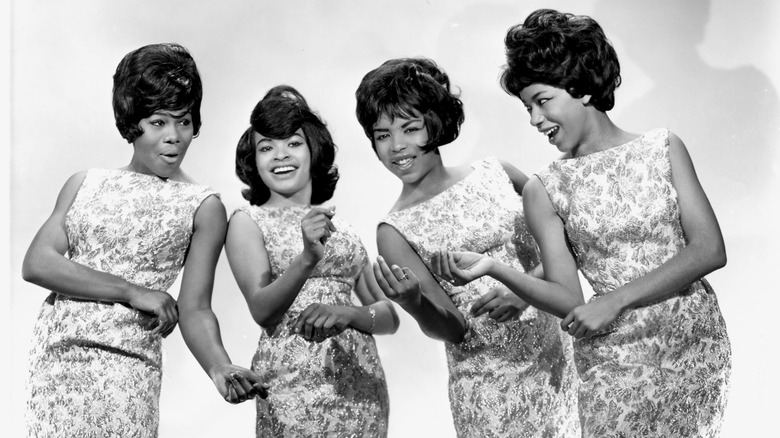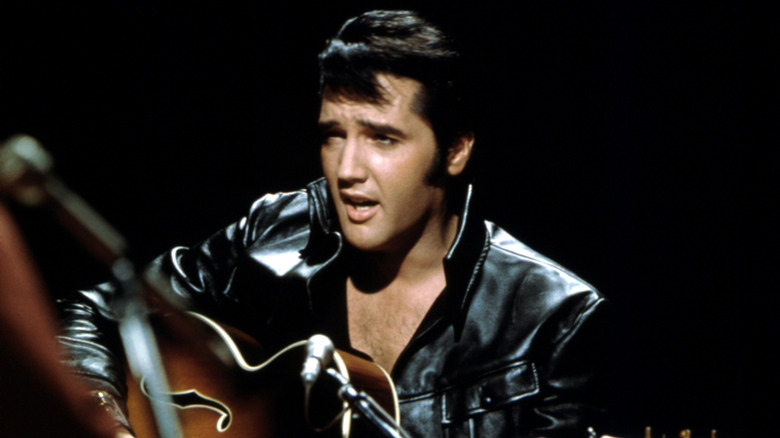Songs That Hit No. 1 By Two Different Artists
Covers of songs are just like movie remakes. Sometimes the remake improves on the original's mistakes and limitations to create an even greater piece of art, as in "The Maltese Falcon" and "The Birdcage." Other remakes stand on equal footing with their original, like "Scarface" and "A Star is Born." And then there are remakes that make one question whether Hollywood is out of good ideas, like, well, there are too many to name.
According to This Day in Music, the Beatles' "Yesterday" is the most covered song in recorded history, with more than 1,600 recorded versions, but even Hollywood does not have enough money to produce anywhere close to that many movie remakes. Young musicians begin their careers playing songs that they grew up listening to, so it makes sense that in some cases, when they start working on an album, they include a cover of a song they know well.
For a special few recording artists, their cover of a song becomes just as great a success as the original, or even surpasses it in popularity. Here are the songs that went to No. 1 on the charts by two different artists.
Killing Me Softly with His Song: Roberta Flack (1973) and the Fugees (1996)
During their all-too-short run as one of the premier groups in hip hop, the Fugees were never shy about sampling very popular songs. Their biggest hit was "Killing Me Softly," which had previously topped the charts in 1973.
Roberta Flack's version of the song was also a cover. According to Paste Magazine, the song was originally written by Charles Fox and Norman Gimble for singer Lori Leiberman, whose version was released in 1971. Flack, coming off her first Grammy win, took on the song two years later and included it on her album of the same name. Flack's cover spent five weeks at No. 1 on Billboard's Hot 100, and the performer won album of the year and best pop vocal performance awards at the 1974 Grammy Awards for the album and song.
Over two decades later, the Fugees gave their spin on the popular song on their commercial breakthrough album, "The Score." As told by Official Charts, the cover spent five weeks at the top spot of the UK Official Singles Chart. The group would win awards for best rap album and best R&B vocal performance by a duo or group at the 1997 Grammy Awards for the song and album, All Music reports. The Fugees and Flack performed the song together at the 1996 MTV Awards.
Lean on Me: Bill Withers (1972) and Club Nouveau (1987)
Bill Withers' 1972 hit song "Lean on Me" has become an anthem of unity. As detailed by Rolling Stone, the song gained an uptick in popularity in 2020, as the world endured the COVID-19 pandemic and other struggles.
Withers' career is full of his songs that were covered by other artists. His song "Grandma's Hands" was covered by Gil Scott Heron and Gladys Knight, as well as being sampled in Blackstreet's 1996 hit, "No Diggity." Other songs covered extensively are "Ain't No Sunshine," "Lovely Day," and "Just the Two of Us. In 1972, "Lean on Me" became Wither's first No. 1 single on the Billboard Hot 100. According to Billboard, it stayed there for three weeks in July and his next single, "Use Me," came close to hitting the top spot as well, but peaked at No. 2.
Fifteen years later, Club Nouveau would make "Lean on Me" the fifth song to hit No. 1 on Billboard twice. According to Stereo Gum, Withers' simple song became an upbeat funk dance tune. The Club Nouveau version spent two weeks at No. 1 on Billboard.
Venus: Shocking Blue (1970) and Bananarama (1986)
According to Songfacts, the opening line to Shocking Blue's original version of "Venus” was a mistake. Being from the Netherlands, English was not the band members' native language. The lyric was supposed to go, "A goddess on the mountain top," but was written down by songwriter and guitarist Robbie Van Leeuwen as "A goddness on the mountain top," and that's how lead singer Mariska Veres performed it. Despite this, the song still became a No. 1 hit and one of the most iconic of the era.
By the end of the decade, another band was just getting off the ground thanks in large part to this song. The pop trio Bananarama formed in 1979 and "Venus" was one of the first songs the group learned. It became a staple in their live shows, but they would not put it on their studio albums until their third album, 1986's "True Confessions." The reason was that they wanted to write and produce original songs so people would not see them as just a cover act. Still, when they finally released "Venus" as a single, it became a smash hit. Like the original, the song reached the top of the Billboard charts.
When a Man Loves a Woman: Percy Sledge (1966) and Michael Bolton (1991)
Outside the R&B community in the United States, Percy Sledge is most often known for one song. His 1966 lone Billboard hit, "When a Man Loves a Woman" is one of the most enduring love songs recorded. The opening, emotional declaration helped establish the Muscle Shoals sound coming out of Alabama during the period, as NPR explains. A quarter-century later, soft rock star Michael Bolton put his own spin on the song to even greater success.
According to the BBC, Sledge's hit became the first U.S. No. 1 song recorded at Alabama's Muscle Shoals studio. The studio would see some of the biggest names in music, like Aretha Franklin and the Rolling Stones, record their art. While "When a Man Loves a Woman" was the only one to chart on the Billboard Hot 100, Sledge's songs became fixtures on the R&B chart and his relentless touring earned him fans throughout the R&B circuit in the U.S. and overseas.
In 1991, Michael Bolton would take an already classic love ballad to even greater heights. As told by Cheat Sheet, Bolton's version hit the top spot on both the U.S Pop Chart and the Adult Contemporary Chart. The song also won Bolton a Grammy the following year and it became the seventh song to go No. 1 twice.
Let's Stay Together: Al Green (1972) and Tina Turner (1983)
Speaking of love songs that helped define a sound, here comes the Reverend Al Green and the Queen of Rock 'n' Roll, Tina Turner. Two of the most successful soul singers of the 1970s and legends in the music industry, both Green and Turner are ranked in the top 20 on Rolling Stone's list of "100 Greatest Singers' (Green at No. 14 and Turner at No. 17).
The story of "Let's Stay Together" is as dramatic as the song is romantic, as detailed in Groovy History. By 1972, Green was getting desperate to make his big break as a solo artist. In the 1960s, he was a member of a quartet called the Soul Mates. They had a minor hit with the song "Back Up Train," but Green eventually grew to hate the song and left the group. Early into his solo career, he met drummer and producer Willie Mitchell, and the two worked together.
"Let's Stay Together" became Green's breakthrough and a chart-topping smash hit. A decade later, another artist was breaking out as a solo artist. Tina Turner had left her husband and musical partner Ike Turner and was working to become a solo star. This is Dig reports that, in 1983, Turner's version of Green's song hit No. 1 on the U.S. Dance chart. The success facilitated her 1984 solo breakthrough album, "Private Dancer."
The Sound of Silence: Simon & Garfunkel (1966) and Disturbed (2016)
In terms of time between the original and cover, these two versions of "The Sound of Silence" have the longest gap on this list. Simon and Garfunkel's folk classic became the soundtrack of a generation, and is forever associated with the hit film "The Graduate." Half a century later, the heavy metal band Disturbed made it into a heavy metal classic.
According to Gaslight Records, "The Sound of Silence" originally flopped upon its 1964 release, as did the version on Paul Simon's first solo album the following year. The song was recorded as an acoustic folk tune on both. However, former Bob Dylan producer Tom Wilson decided to overdub the song with electric instrumentation, turning it into the folk-rock classic and catapulting it to No. 1 on Billboard in the first week of 1966, to the shock of Simon and Art Garfunkel.
Over fifty years after the song hit No. 1, Disturbed's cover took No. 1 on the Mainstream Rock chart. According to Billboard, unlike the original folk tune or Tom Wilson's folk-rock production, Disturbed's version was operatic and notable for the deep voice of frontman David Draiman. Accompanied by strings and keyboards, even Paul Simon, the writer of the song, had to give props to the heavy metal outfit for their version, Ultimate Classic Rock reports.
I'll Be There: The Jackson Five (1970) and Mariah Carey (1992)
Michael Jackon and Mariah Carey are arguably the two most successful artists on this list. According to Insider, Jackson holds 14 No. 1 singles, in addition to the four No. 1 singles he shares with his brothers as the Jackson Five, as Billboard details. Mariah Carey's 19 Billboard No. 1 singles sits only second behind the Beatles, who have 20 to their name.
One of the four No. 1s that the Jackson Five recorded is "I'll Be There." According to Songfacts, the song is told from the perspective of a man telling his former lover he will always be there for her, and despite being only 11 at the time of its recording, Michael's heartfelt declaration of commitment stood in contrast to the simple pop songs of the group's early career.
Two decades later and after bursting onto the music world with the same force as the Jacksons, Carey released her own version of the song after including it in her "MTV Unplugged" performance. Supported by an uncredited Trey Lorenz singing the bridge, the song became Carey's sixth No. 1 hit.
Lady Marmalade: Labelle (1975) and Christina Aguilera, Lil' Kim, Mya, & Pink (2001)
When Baz Luhrmann needed a song to soundtrack his 2001 hit musical film, "Moulin Rouge!," it only made sense to pick up the 1974 No. 1 hit "Lady Marmalade" by Labelle. The song tells the story of a sex worker in New Orleans enticing gentlemen to the Moulin Rouge club, as explained by Cheat Sheet. Three decades after the release of the original, four top female artists combined their talents to remake this '70s classic into an anthem for the new millennium.
Ironically, despite becoming the band's most remembered song, Labelle singer Patti LaBelle did not know the original meaning of the lyrics. The French phrase, "Voulez-vous coucher avec moi (ce soir)?" translate to "Do you want to sleep with me (tonight)?" but it was not until a nun publicly complained about the message that the band learned the meaning. LaBelle recalled, "I didn't know we were singing about a lady of the evening. Young girls today are so well versed because of the internet, so they'd never not realize, but it was different then. Thank God we did the song, anyway!"
When the song was covered by four of the biggest pop performers in the world at the time — Christina Aguilera, Lil' Kim, Mya, and Pink — and co-produced by Missy Elliot, there was no naivete about the meaning. The new version shot to No. 1 and netted the performers a 2002 Grammy for best pop collaboration with vocals, according to Vogue.
I Will Always Love You: Dolly Parton (1974 and 1982) and Whitney Houston (1992)
One is the undisturbed queen of country music and one is simply known as the Voice. Dolly Parton and Whitney Houston are two of the greatest performers in their respective genres and have left musical legacies that have influenced countless other female performers. The two are forever linked by Parton's No. 1 hit song. According to Click Radio, Parton wrote "I Will Always Love You" to her musical partner, Porter Wagoner, as she was leaving his show that bore his name to begin her own career.
The song hit No. 1 on the country charts in 1974, and again when Parton re-released it in 1982 after its inclusion on the soundtrack of the film, "The Best Little Whorehouse in Texas." According to the Boot, despite her best intentions, Parton and Wagoner became estranged following her departure from his show, but later reconnected, and Parton performed an emotional version of the song in a tribute at the Grand Ole Opry months before Wagoner's passing in 2007.
Parton had huge success with the song but when Whitney Houston gave her rendition on the soundtrack for her film "The Bodyguard," she blew away most memories of Parton with a voice as powerful as a thunderclap. Houston's version stayed at the top of Billboard's chart for a then-record 14 weeks. According to Vogue, in October 2020, Houston's cover became one of only four songs from the 1990s with over 1 billion views on YouTube.
Please Mr. Postman: The Marvelettes (1961) and The Carpenters (1975)
The Beatles held 20 No. 1 hit singles on Billboard, but their 1961 hit single "Please, Mr. Postman" was not one. Can't have them all, lads! No, this hit song belongs to the first ladies of Motown Records, the Marvelettes. According to Classic Motown, in September 1961, the Marvelettes' "Please Mr. Postman" became the first of many No. 1 hits from Motown artists over the next quarter-century.
While the Marvelettes were climbing the charts and helping to establish the Motown sound, Richard Carpenter was 15 years old and his sister Karen was 11. By the end of that decade, the duo would release their first album, "Ticket to Ride." As told by U Discover Music, they had covered a number of popular songs, such as the Beatles' "Ticket to Ride," but it was their version of "Please Mr. Postman," included on their 1975 album "Horizon," that netted them their 11th U.S. Top 10 single and their third and last No. 1 hit.
Can't Help Falling in Love: Elvis Presley (1961) and UB40 (1993)
UB40 had a successful run of covering some of the greatest artists of the previous generation. They covered Stevie Wonder's "Higher Ground," Al Green's "Here I Am," and the Temptations' "The Way You Do The Things You Do." However, it was their take on work of the King of Rock 'n' Roll that netted them a No. 1 single on the Billboard chart. Elvis' own version of "Can't Help Falling in Love" went to No. 1 on both the adult contemporary and British charts, and No. 2 on the Billboard chart, Country Thang Daily details.
Written by Hugo Peretti, Luigi Creatore, and George David Weiss, the song became one of Elvis' most performed throughout his career. According to Songfacts, the "Blue Hawaii" soundtrack that featured the song was No. 1 on the U.S. charts for 20 weeks in a row, a then-record that was eventually broken by Fleetwood Mac's "Rumours."
The song became a common choice for artists to cover, but only one other artist was able to take it to the top of the charts. Thirty years after the original, UB40's reggae-influenced version hit the top of the charts.
A Moment Like This: Kelly Clarkson (2002) and Leona Lewis (2006)
In the 2000s, televised talent competitions became the new Motown hit factory, churning out new stars on a regular basis. Kelly Clarkson and Leona Lewis are two of many singers who got their big break in these competitions, and both of them scored a hit with the song, "A Moment Like This," which climbed to No. 1 on the charts on both sides of the Atlantic.
According to Song Facts, in 2002, Clarkson's version of "A Moment Like This" broke the record for the biggest jump to the No. 1 spot on the U.S. Hot 100 chart. The week prior to becoming the top song, it sat at No. 51. The jump surpassed the previous record, held by the Beatles with "Can't Buy Me Love." Clarkson's success illustrated that televised singing competitions could be fruitful in finding new stars. Since Clarkson, these competitions have introduced us to stars such as One Direction, Fifth Harmony, and Carrie Underwood to name a few.
A few years later, Leona Lewis would mirror Clarkson across the pond. In the last week of 2006, her version took the No. 1 spot. In its first week, it had more than half a million downloads and earned the top spot of the Euro Digital Track chart, as detailed by Billboard.
